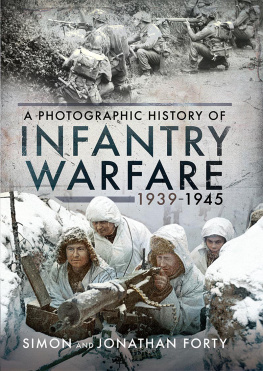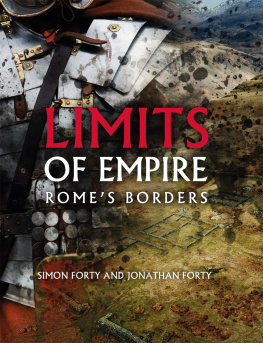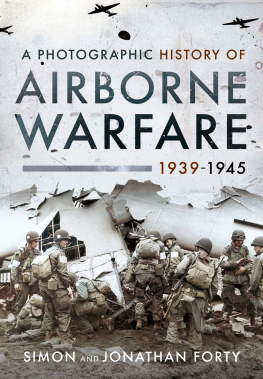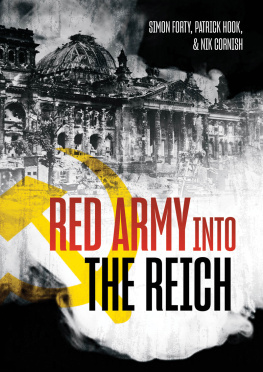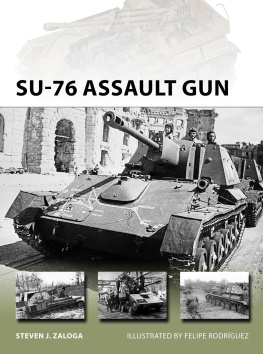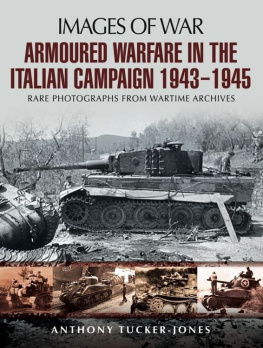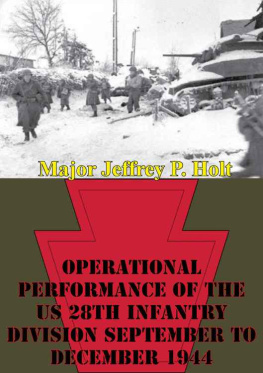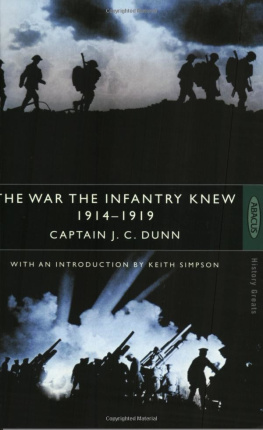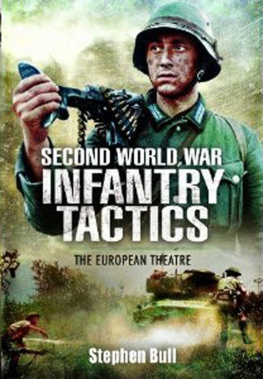Pagebreaks of the print version

INFANTRY WARFARE
1939-1945
INFANTRY WARFARE
1939-1945
SIMON & JONATHAN FORTY
First published in Great Britain in 2021 by
Pen & Sword Military
an imprint of
Pen & Sword Books Ltd,
47 Church Street,
Barnsley,
South Yorkshire.
S70 2AS
Copyright Pen & Sword 2021
A CIP record for this book is available from the British Library.
ISBN 978-1-52677-6822
eISBN 978-1-52677-6839
Mobi ISBN 978-1-52677-6846
The right of Simon and Jonathan Forty to be identified as Authors of this Work has been asserted by him in accordance with the Copyright, Designs and Patents Act 1988.
All rights reserved. No part of this book may be reproduced or transmitted in any form or by any means, electronic or mechanical including photocopying, recording or by any information storage and retrieval system, without permission from the Publisher in writing.
Pen & Sword Books Ltd incorporates the Imprints of Pen & Sword Aviation, Pen & Sword Maritime, Pen & Sword Military, Wharncliffe Local History, Pen & Sword Select, Pen & Sword Military Classics and Leo Cooper.
For a complete list of Pen & Sword titles please contact
Pen & Sword Books Limited
47 Church Street, Barnsley, South Yorkshire, S70 2AS, England
E-mail:
Website: www.pen-and-sword.co.uk
Acknowledgements
The text includes a number of directly quoted or edited excerpts from a number of works which are identified in the text and covered in the Bibliography. Many of these documents came via the excellent online resources of the Ike Skelton Combined Arms Research Library (CARL) Digital Library. Please note that some of these excerpts are contemporary and produced based on intelligence available at the time: there will be some, understandable, inaccuracies.
The photographs came from a number of sources including the US National Archives and Records Administration, in College Park, MD, the Library and Archives of Canada, the SA-Kuva Finnish archive, Hungarian archives, Narodowe Archiwum Cyfrowe, Battlefield Historian and the collection of our late father, George Forty. Thanks, too, to Richard Charlton Taylor, Leo Marriott and the late Martin Warren for their help and valuable contributions including photos and editorial comments. The individual photo credits are provided at the end of the book: if we have made mistakes here, please point them out to us via the publisher.
There are a number of websites that proved invaluable for help with captions and information. In particular wed like to reference the US Center of Military History for high quality histories and access to technical manuals and https://durhamlightinfantryI920-46.weebly.com for fascinating detail about the DLI.
Finally, thanks to Rupert Harding of Pen & Sword for being such an understanding editor and for pointing out a number of inaccuracies.
US Ranger training in Scotland.
Cautious infantrymen of 29. Infantry-Division accompanied by a Sturmgeschutz III in Russia.
Preface
A ll too often, books about war in general and World War II specifically analyse weapons: whose tanks, machine guns or rifles were the biggest and the best. Thats one reason why books on German tanks outsell most other military titles: black-suited men with silver deaths head insignia looking out of big tanks named after big cats. Emphasised by Hollywood, where plucky heroes can be winged, roll a cigarette one-handed and plug the enemy with a never-ending supply of ammunition, the wartime national stereotypes are reinforced: Germans are always organised, Italians always cowards, Brits always enthusiastic amateurs who drink tea and Americans are cowboys in khaki. Victory is glorious and eventually goes to the men in white hats.
In reality, of course, everything is more nuanced. The Germans certainly were organised, but didnt have enough suitable cold weather clothing outside Moscow in 1941. The Italians fought with great courage alongside the Germans in Africa and Russia and were often left in the lurch by their Allies. Brits and the many Imperial and Commonwealth troops who served with them did, indeed, drink tea but they also landed gliders with pinpoint accuracy at Bnouville and fought the hard yards in the Reichswald. And Americans really were the Seventh Cavalry, who helped save the day even if they did so reluctantly, with rather less elan than Hollywood would like, and were often more suspicious of their Allies than their enemies.
Victory did, indeed, go to the men in white hats but at great cost. The suffering particularly to civilians showed that there were no noncombatants in the areas that the war was fought. And of all the arms that saw battle between 1939 and 1945, it was the infantry who had the hardest lot, suffering the highest casualties and the worst conditions. From the frozen north to the Sahara, the jungles of Asia to the rain-soaked Saar, infantrymen fought not just the enemy but anything the elements could throw at them.
This mainly photographic survey seeks to highlight the key points of the infantrymans war, referencing contemporary literature to show the equipment and tactics that were employed. It is in series with books on armour and artillery

Third Reich propaganda poster. A quote from Hitler: Of all our German soldiers, the heaviest burden of the battle today as in the past falls on our unparallelled infantry.
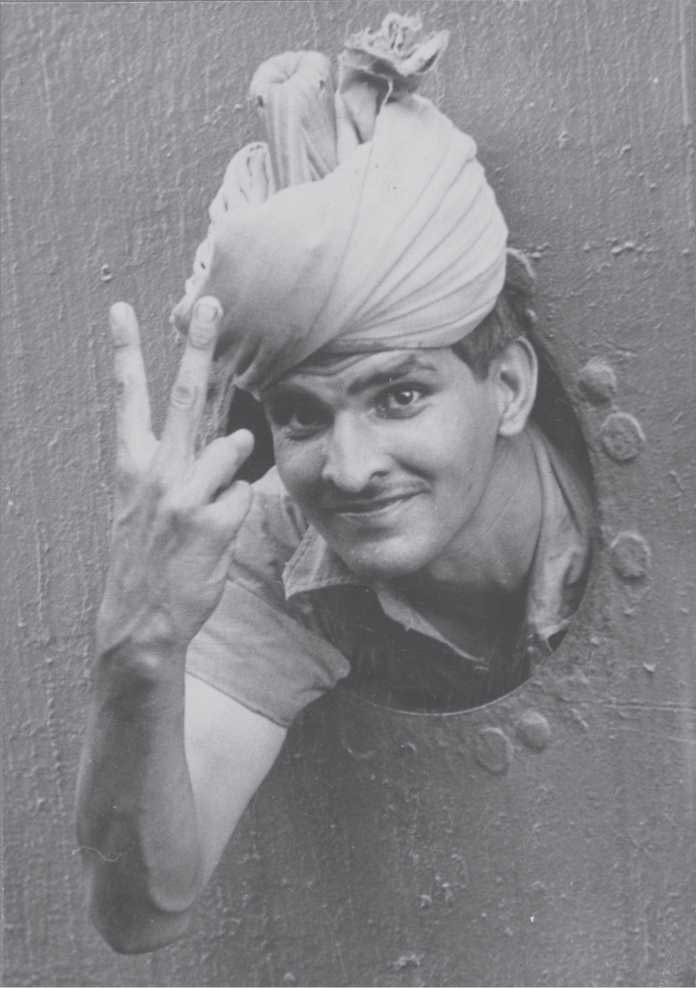
The infantrymans war was bloody. Few could stomach the experience of battle for extended periods of time. Patton thought around 200 days was the maximum.
V for Victory. Not every Indian was prepared to fight for the British Empire, but 2.5 million did 87,000 giving their lives. Some 40 percent of those who fought against the Axis powers were Muslim. India came out of the war with an agreement by the British to oversee independence which was achieved in 1947.
Introduction
T he infantryman has always had the most uncomfortable seat in the house. Young, often seen as being less intelligent than others who were whisked off to become pilots and navigators, gunners or signallers, the infantry endured the hardest conditions and heaviest casualties. From the frozen north of Norway to the hot sands of the African desert, infantrymen had to do the dirty work: get close enough to see the whites of the enemys eyes and then kill them.
The war to end all wars had shown what modern warfare was like: World War II followed suit. The weapons might have been a little more modern and sophisticated but the end product was the same: massive armies, huge casualties and enormous destruction.The overall death toll in World War II some 80 million eclipsed any other war. The deaths sustained just by the Soviet Union, around 25 million, were more than the 20 million who died during World War I. Around half the deaths in 191418 10 million were military. In World War II, that number was around 25 million, more than double that of the Great War but a reduction in overall percentage terms: aerial bombing, the Nazis programmes of genocide, combined with their and the Japanese callousness towards PoWs and civilian populations, led to an extraordinary number of civilians killed between 1937, when Japan invaded China, and 1945 when two atomic bombs saved the lives of thousands of American and Japanese infantrymen.

